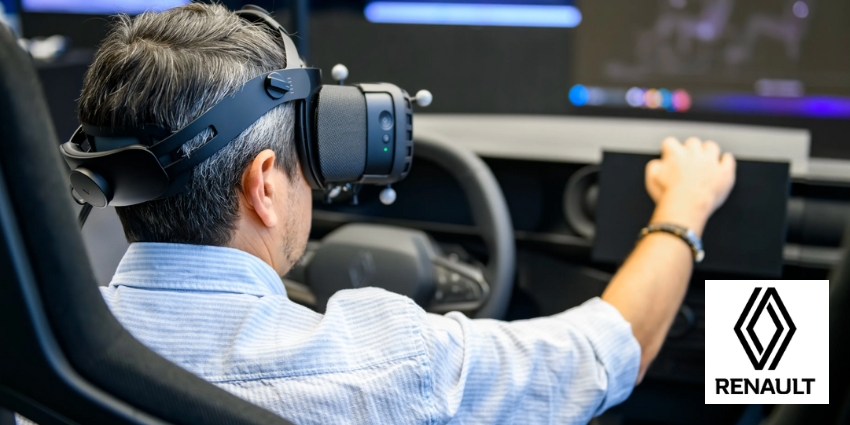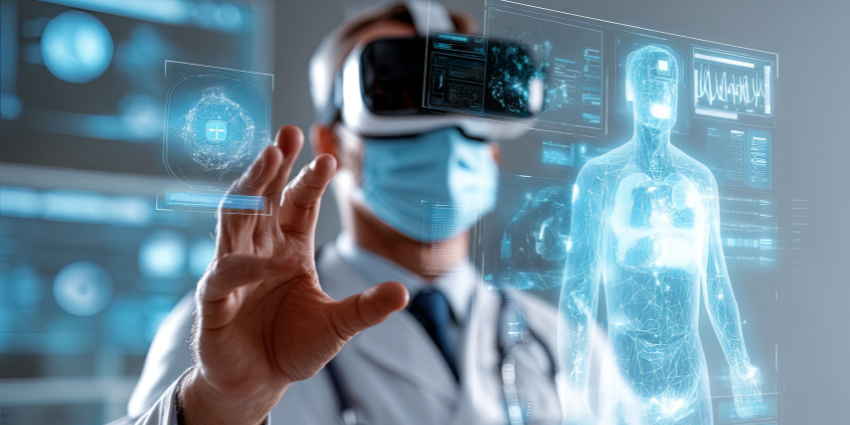The XR space may look very different at the end of 2024. A shift is underway as the value of spatial data is being touted by significant computing firms.
Industry segments understand the value of AR/VR/MR data, and applications are emerging use cases that showcase how immersive technology can alter daily life.
Increasingly, thanks to less intensive AR solutions on the rise, so are the use cases and end devices of immersive technologies.
When 2025 comes along, industry and consumer hardware, from headsets to robotics to smartphones, will leverage data to create innovative solutions – and the foundation is laid today.
Does Dyson CleanTrace for Apple iPhone showcase an assistive reality future?
A promotional video for Dyson has recently gone viral. The video showcases a smartphone AR application with a Dyson Gen5 detect stick vacuum, displaying where users have cleaned and where they haven’t.
The Dyson CleanTrace consumer-facing application shows how AR visualisations could be integrated into everyday life without using smart glasses or headsets. Dyson’s AR service is only available for iPhone 12 Pro or later, and it uses the device’s built-in LiDAR scanner to highlight vacuumed sections of a floor, which updates in real time based on the vacuum’s position.
Charlie Park, Dyson Home VP of Engineering, explained that Dyson developed the AR solution with lessons learnt via its robotic vacuum product, which uses a similar technology, “We realised that we could all learn a thing or two from the methodical cleaning approach of our robot vacuums. Unlike most humans doing the cleaning, Dyson robots know where they are in the room, where they have been, and where they have yet to go,” Park said.
Park also added:
With the Dyson CleanTrace, we add this extra layer of cleaning intelligence to the Gen5detect vacuum. It gives you the ability to see where you have and haven’t cleaned, which, combined with our on-board particle sensing technology, gives proof that the floor is truly clean.
The firm plans to publically debut the Dyson CleanTrace solution in June 2024, with no confirmation for future support for other end devices.
Glue Collaboration to Shut Down
On April 8, 2024, Glue’s operating firm, a virtual reality immersive collaboration platform provider, declared bankruptcy under a decision made by the District Court of Helsinki. The company is now selling its assets, including the Glue platform. If a new company does not purchase the platform and continues its operation, Glue may shut down for good.
The company stated that despite their best efforts to prevent this outcome, they could not find a timely solution. Over the next two weeks, Glue will explore options to secure the platform’s future. However, suppose a suitable operating company is not found. In that case, the platform will close after those two weeks or earlier if the service providers for the company’s servers decide to shut the servers down or deny access due to unpaid invoices.
The Glue platform is currently operating under its 2.0 version. This version allows users to engage with expected remote meeting tools, such as virtual spaces, customizable assets, and presentation tools. The service has been adopted by firms such as T-Mobile, which has notably championed its success with the service.
Meta Quest v64 Update
Meta Quest version 64 has been released for headsets, significantly improving Quest 3’s passthrough features, essential to the device’s AR/MR capabilities. This update also enhances the device’s microphone and user experience.
The passthrough improvements enable Quest 3 users to experience better graphics, colour, exposure, contrast, and dynamic range. As a result, Quest 3 v64 enhances how immersive assets coexist with real-world environments through passthrough performance improvements, increasing user spatial awareness.
Furthermore, the passthrough improvement allows Quest 3 operators to quickly see minor details of their real-world surroundings, such as a phone notification. Improving understanding and visibility of a user’s environment is an emerging concern, especially in enterprise or industrial environments where situational awareness is critical to worker safety and success.
Under the Quest’s Experimental Settings tab, v64 users can now use external microphones. This allows users to connect USB-C-compatible external microphones for enhanced audio compared to the device’s built-in microphone.
Other v64 updates include an improved user experience while a user is lying down and a continuous casting feature that allows a headset to stream AR/VR/MR content when a user removes their headset instead of cancelling an application’s operation.
Meta Quest 3’s storefront also now contains the Layout application and user interface system that mirrors the Vision Pro framework. Meta initially touted the service to release alongside the device’s v60 update, but it was quietly debuted on the store and most recently updated on March 31. Audiences should expect the official and fully optimized version to drop soon.
Meta Layout seems to adopt Apple’s approach to spatial computing interaction by mimicking the device’s immersive pop-ups surrounding a user on the Vision Pro.
The Vision Pro aims to enhance the functionality of traditional 2D desktop screens by transforming desktop icons into interactable AR applications, which users can launch as immersive pop-ups alongside their real-world environment.
Layout, an application updated following the Quest 3’s spatial anchoring and AR asset interaction improvements earlier this year, leverages the device’s most recent update to allow users to place and interact with AR/MR assets as they please.
Furthermore, Quest 3 users can scan their environment and objects with Layout to accurately place AR/MR assets that can react to the real world. The service gives users tools to measure an object’s length and height, allowing AR/MR assets to exist realistically alongside immersive visuals.
Now, with v64 Layout and passthrough improvements, they may work hand in hand to create an overall optimized user experience.
Vuzix Shield Smart Safety Glasses Debut
Vuzix Corporation has recently announced the launch of Vuzix Shield smart safety glasses, which are wearable AR devices designed to cater to industrial and frontline working environments.
The AR technology was initially launched through a limited fulfillment strategy targeting developers and researchers. However, the company has now opened up the product to broader enterprise clients. The Vuzix Shield safety glasses can be used in various industries such as medical, first responder, logistics, transport, field service, and inspection. Enterprise clients can easily access the product by visiting the Vuzix website.
Paul Travers, the President and CEO of Vuzix, added:
Though we’re still working against a customer backlog, we’re pleased to have increased our manufacturing capacity to support growing demand for Vuzix Shield. As always, we aim to deliver the highest levels of customer service with our products. Vuzix Shield is unique in the market, and is the only wireless, fully integrated pair of prescription-ready smart glasses offering advanced AR capabilities in a form factor that feels great and looks amazing for front-end use.
The Vuzix Shield device is a pair of prescription-ready AR smart safety glasses that offer competitive features. The device comes with stereoscopic microLED (µLED) waveguide-based displays, ANSI Z87.1 safety certification, self-contained batteries, stereo HD cameras, stereo over-the-ear speakers, and noise-cancelling microphones.
This product aims to drive worldwide scalability by supporting voice input in 29 languages. Additionally, AI support allows workers to optimize industrial workflows with new tools. The HD cameras integrated into the glasses provide real-time inputs and feedback by increasing environmental awareness through AI integration.







